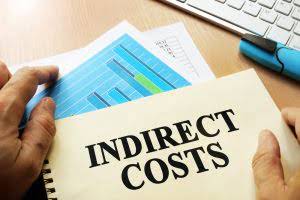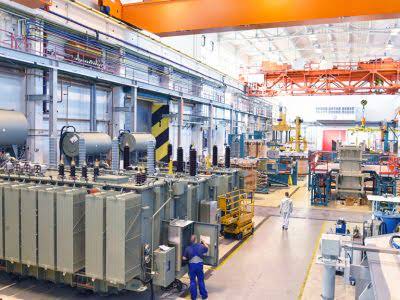
Direct materials are the inventory stock items used to create a finished product. Direct materials include raw materials, components and parts directly used in the production or manufacture of finished goods. First, we need to understand what https://www.bookstime.com/ manufacturing cost is, the different types of manufacturing costs as well as some examples to get context for what we’re talking about. Then we’ll provide formulas to calculate each type of manufacturing cost and the total manufacturing cost.
Global UDI Compliance: Good for Patients and Medical Device Manufacturers
- As a small manufacturing business owner, you probably spend a lot of time thinking about pricing strategies and how to make your manufacturing process more efficient.
- (b) The value of the money multiplier when the required reserve ratio is 10.5 percent is approximately 9.52.
- These values indicate the potential increase in the money supply through the fractional reserve banking system.
- For example, the cost of special oil used in a piece of manufacturing machinery is considered indirect material.
To calculate this, divide the number of units produced by the number of hours needed to produce them.
How to calculate direct material cost?
Direct costs change based on the production period and how much product you manufacture. This generally includes materials and labor, which vary based on many factors, such as demand planning and staffing.Wondering how to calculate direct materials cost? Direct materials are calculated by subtracting the direct materials left at the end of the production period from the total amount of materials you started with and purchased in the period. Staff not handling the production of goods, such as management, accounting, maintenance, cleaning staff, etc. are not considered direct labor. These expenses constitute indirect costs, at least from the perspective of the manufacturing process, and are allocated as overheads. The direct material cost should never be calculated by multiplying the number of final products with the material quantities from their BOMs.
Financing costs
We’ve ignored these indirect costs for the sake of simplicity, but you really shouldn’t. Indirect costs refer to any necessary spending not directly connected to the manufacturing process. This includes (but is not limited to) the cost of electricity, rent, and so on.

Why is it Important to Calculate Total Manufacturing Costs for Supply Chain Efficiency?
Do note, however, that direct labor costs generally do include retirement funds, holiday pays, payroll taxes, and any additional fees that direct laborers bring with them. Some companies may even decide to include costs related to training the production staff in direct labor costs. While quite basic on paper, gathering precise information on all these constituents can be a challenge in real life. Since the total manufacturing cost is an essential metric for understanding the productivity and profitability of a business, it really pays to get it right the first time.
How can businesses reduce Total Manufacturing costs without compromising quality?
This data is also shared with other features, such as our dashboards and reports. Moving to the fourth part investigates how Aggregate Supply changes with changes in T+1 and variations in Tt, representing current time periods. These changes reflect the impact of factors such as technology, labor supply, and production costs on the overall supply of goods and services.

This calculation provides insight into how much it costs to make your product, identifying any underlying inefficiencies or exorbitant expenses. Along with many other manufacturing accounting metrics, total manufacturing costs can easily be tracked in an MRP/ERP system. Using this kind of software with a built-in manufacturing accounting system frees up managers’ time for activities that help actually grow the company.
How Can an ERP System Help Organizations Manage their Total Manufacturing Costs?

To calculate direct material, compare raw material at the beginning of the year and raw material purchases during the year with raw material left at the end of the year. Therefore, 12.24% of total manufacturing cost formula monthly revenue will go toward the business’ overhead costs. ProjectManager is online project management software that connects teams whether they’re in the office or on the assembly line.
- A comprehensive test strategy should be developed concurrently with your product design.
- Indirect materials costs are also part of manufacturing overhead, such as the purchase of lubricants, grease and water that aren’t used as raw materials.
- Keeping an eye on COGM is important because it enables manufacturers to scope the expenses involved with producing goods, analyze the profitability of their operations, and also calculate the cost of goods sold (COGS) KPI.
- Therefore, the value of the money multiplier when the required reserve ratio is 14 percent is approximately 7.14.
- In conclusion, when the required reserve ratio is 14 percent, the money multiplier is approximately 7.14, and when the required reserve ratio is 10.5 percent, the money multiplier is approximately 9.52.
- But remote access aside, Manufacturing software’s real strength comes from the fact that it unites all your business functions, allowing every employee to complete work within the same system.
- In coffee manufacturing, for example, the cost of coffee beans is a direct material cost.
How to Calculate Total Manufacturing Cost?
Overall, the analysis phase is focused on gathering, documenting, and analyzing the requirements of the system to ensure a clear understanding of its desired features and operations. The various documentation artifacts generated during this phase serve as a blueprint for the subsequent stages of system development. Firms voluntarily present certain information, such as their environmental performance, to demonstrate their commitment to sustainability, transparency, and accountability.
- By reinforcing brand positioning, companies can maintain and expand their customer base, build brand loyalty, and establish a strong market presence to further drive growth in the product life cycle.
- Businesses can monitor and control manufacturing costs by setting up a robust cost tracking system, conducting regular budget vs. actual cost analyses, and identifying areas for improvement.
- After using the total manufacturing cost formula to work out your overhead expenses, direct, and indirect costs, you can start to break down where inefficiencies in your production process exist.
- Monitoring the total manufacturing costs across different branches can also provide valuable insight.
- Machine operators and assembly line workers are the most common types of direct labor workers.
In the final part, the question asks about the graphical representation of these curves in (Y, T+1) space and (Y, Tt) space, respectively. Plotting these curves allows for a visual understanding of the relationship between output, price levels, and the variables representing future and current time periods in the model. The second part involves constructing the goods market clearing condition for equilibrium in this economy. From this condition, we can identify an Aggregate Demand equation and an Aggregate Supply equation. These equations provide insights into the relationship between changes in money supply, price levels, and output.
Leave a Reply